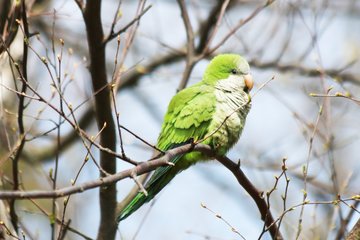Division of labor affects the risk of infection
Ants that leave the nest to forage are more likely to be infected by parasites than their nestmates who take care of the brood
In a new study, an international research team including scientists at the Max Planck Institute for Chemical Ecology reports that, given the same genetic makeup, individual behavior alone determines whether or not an individual in a social group will contract a disease. Clonal raider ants of the species Ooceraea biroi that forage outside the nest are more likely to be infected by parasitic nematodes than conspecifics in the nest. The research team also observed that diseases in the colony altered the behavior of all ants: sick and healthy ants alike remained in the nest and the division of labor was reduced, affecting the overall social organization in the ant colony.

The Covid 19 pandemic made it quite obvious that not all people were equally at risk of catching the new virus. The elderly, the sick, and people with health problems needed special protection because the risk of contracting a life-threatening illness or dying from the virus was greatly increased. Apart from this, the risks of contracting the virus were also unequally distributed due to our occupational activities. By no means was everyone able to protect themselves from contact with infected persons by working at home. So-called "system-relevant" occupations were often those in which there were particularly large numbers of encounters with potential virus carriers: jobs in nursing and the medical sector, in child care and teaching, and providing the everyday necessities.
"Division of labor, the fact that different members of a social group perform different tasks, has long been thought to result in different disease exposure. A frequent assumption is that the division of labor can lead to an unequal exposure of group members to pathogens or parasites," explains study leader Yuko Ulrich of the Max Planck Institute for Chemical Ecology. She heads the Lise Meitner Group Social Behavior. However, it is not easy to test this assumption experimentally, as other factors, such as diet, age and personal susceptibility, often also play a role. In her postdoctoral work in Daniel Kronauer's group at The Rockefeller University, Yuko Ulrich was involved in establishing the clonal raider ant Ooceraea biroi as a model for studies of the effects of individual behavior on social organization. Workers of this species have no queen and reproduce asexually via unfertilized eggs that develop into genetically near-identical individuals. As a consequence, all members of the ant colony are genetically identical and researchers can observe colonies of the same age under exactly the same conditions - the ideal model system to test the assumption.
Parasitic nematodes are more likely to infect foraging ants

The cause of disease in the focus of the current study are parasitic nematodes. They infect a particular gland on the ants' heads. The behavioral studies were conducted using automated behavioral tracking, which allows computerized analysis of the behavior of each individual ant in a colony using videos. This tracking of individuals is done simultaneously in many ant colonies. This sophisticated system generates far more data than human observations and manual evaluations would create. "We observed that individual behavior alone affects their risk of infection. For example, ants that spend more time outside the nest foraging are more likely to become infected than individuals that have the same genotype and age but spend more time inside the nest," first author Zimai Li summarizes key findings from the behavioral assays.
As the research team found out, infection with the parasites significantly reduces the survival rate of the ants. Genetic analyses showed that infected ants exhibited altered gene expression patterns. In addition, the scientists used gas chromatography analyses and found that the odor profile of infected ants had changed. The ants' cuticle is covered by a waxy layer of various hydrocarbons. "Our chemical analysis showed that infections altered the relative abundance of all cuticular hydrocarbon classes on the cuticle of clonal raider ants: both n-alkanes and methyl-branched alkanes had lower relative abundance in infected individuals. These substances are thought to be associated with desiccation resistance and communication among ants," says Zimai Li.
Infections in the colony change the behavior of all ants
The behavioral observations also revealed a quite surprising result: the division of labor within the colony not only affects the risk of infection of individual ants, but an infection also controls the behavior of the ants. Not only did infected animals spend more time in the nest, but also their healthy nestmates did. "We were surprised to find that the presence of infection reduced activity outside the nest in not only the direct host but also the uninfected nestmates. Since the nestmates are not infected, we did not expect that their behavior would also change; their behavioral changes were not directly induced by infection. This observation raises new questions that we need to investigate further. We would like to find out whether ants recognize the infection status of their nestmates and whether this induces some kind of care-taking behavior expressed by the healthy ants staying close to the sick ones," says Zimai Li.
Another explanation would be that the parasites cause these behavioral changes in order to be able to reproduce further. This is because parasite infection causes healthy and sick ants to come together more frequently in the nest, which should increase the likelihood of transmission. The altered odor profile of infected ants, which the researchers identified, may also play a role. "This study has raised many questions that we hope to answer in follow-up studies. For example, we want to know why the nematodes infect this one gland in the ants' heads. We are also interested in how the ants' chemical communication changes when some individuals are infected. And finally, we want to find out whether the changes in the ants' behavior benefit their own colony or the parasites," says Yuko Ulrich, summarizing the investigations now planned.













